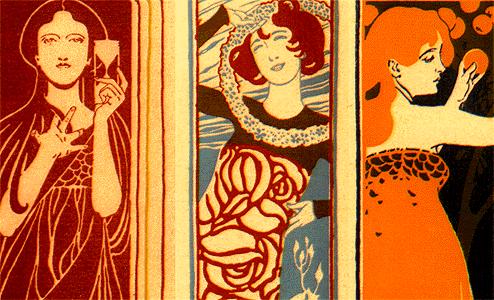
beautyme collections culture cuisine mobility music search
Winter Exhibition 1899/1900 Centenary
MAK 15 December 1999-26 March 2000
next>>>

The exhibition "Arts and Crafts at a Turning-Pointî, which will be shown at the MAK Works on Paper Room from 15 December 1999 to 26 March 2000, highlights the Winter Exhibition of 1899/1900 at the Austrian Imperial and Royal Museum for Art and Industry, a predecessor of the MAK. The Winter Exhibition, which marked one of the crucial turning-points towards modernity in the field, was organized according to commercial criteria, and all interiors and arts and crafts objects could not only be admired but also bought by the visitors. Among the designers presented were artists like Otto Wagner, Josef Hoffmann, Josef Maria Olbrich and Koloman Moser. Their ideas were executed by the most innovative companies of the monarchy: by the glass factories Lobmeyr, Bakalowits and Loetz and the wood-processing firms Thonet and Portois & Fix.
"Vienna arts and crafts have become European againî-it was an enthusiastic tenor that characterized the art critic Ludwig Hevesi's review concerning the design of the Third Winter Exhibition of the Austrian Museum for Art and Industry in December 1999, which offered a survey of the status quo of Austrian arts and crafts at the turn of the century. In accordance with the museum director Arthur von Scala's initiative, a number of Austrian artists and designers presented their recent products at this exhibition. While still committed to the concepts of historicism and its overflowing richness of forms on the one hand, the shown items already revealed the beginnings of a new simplicity and immediateness as regards design and materials on the other. This modern outlook resulted from the fact that many artists got their inspirations from the objects Arthur von Scala had acquired for the museum as models for people working in this area. As for his acquisitions, Arthur von Scala concentrated on English and French models like products from the London Guild of Handicraft, Morris & Co, Chippendale and Samuel Bing's L'Art Nouveau Gallery in Paris. Though his strategy met with rather hostile reactions, it established a productive discourse and helped the Austrian arts and crafts to achieve European standards.
Fig: Koloman Moser, Kalender für das Jahr 1900
photo by Paulus Rainer/MAK